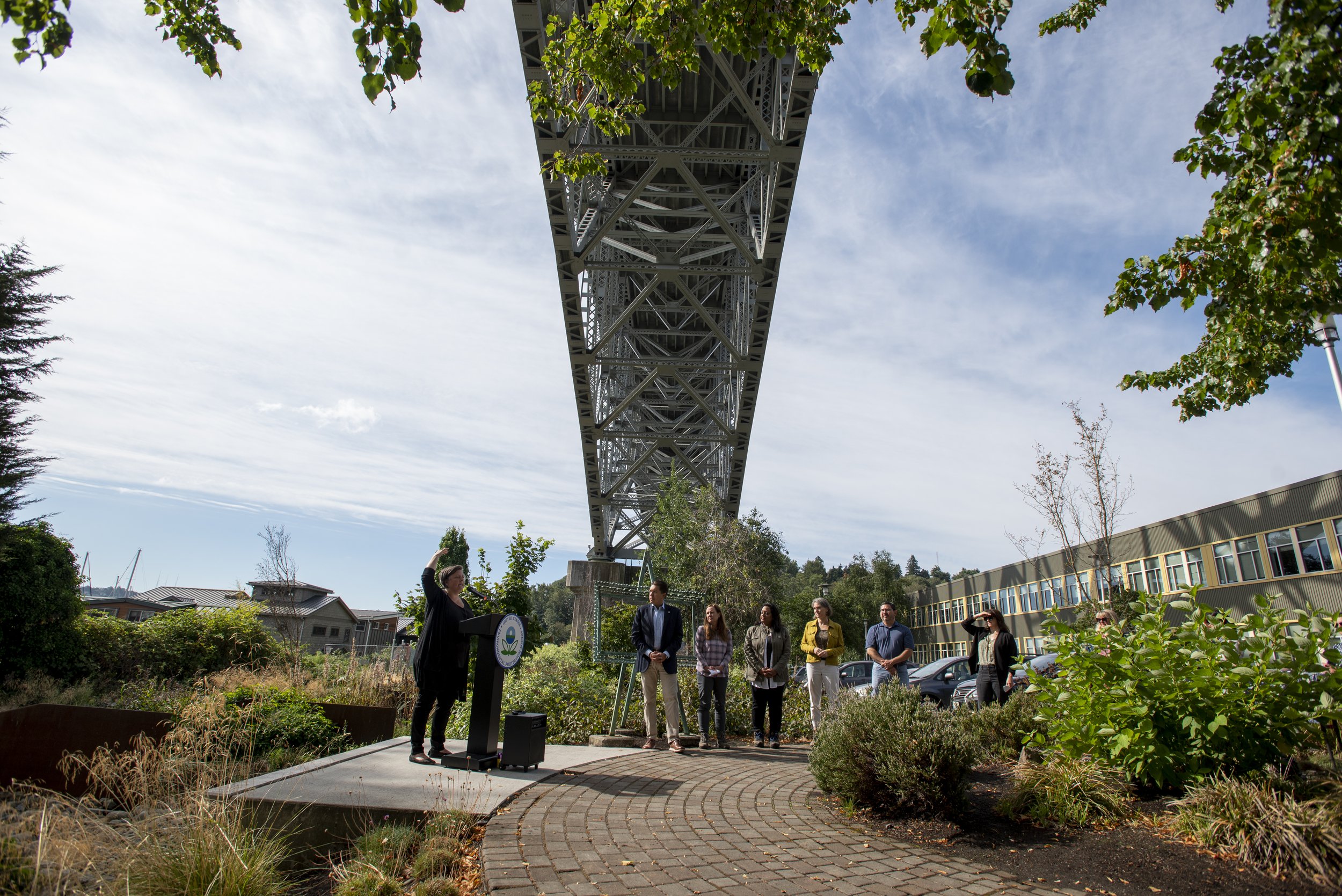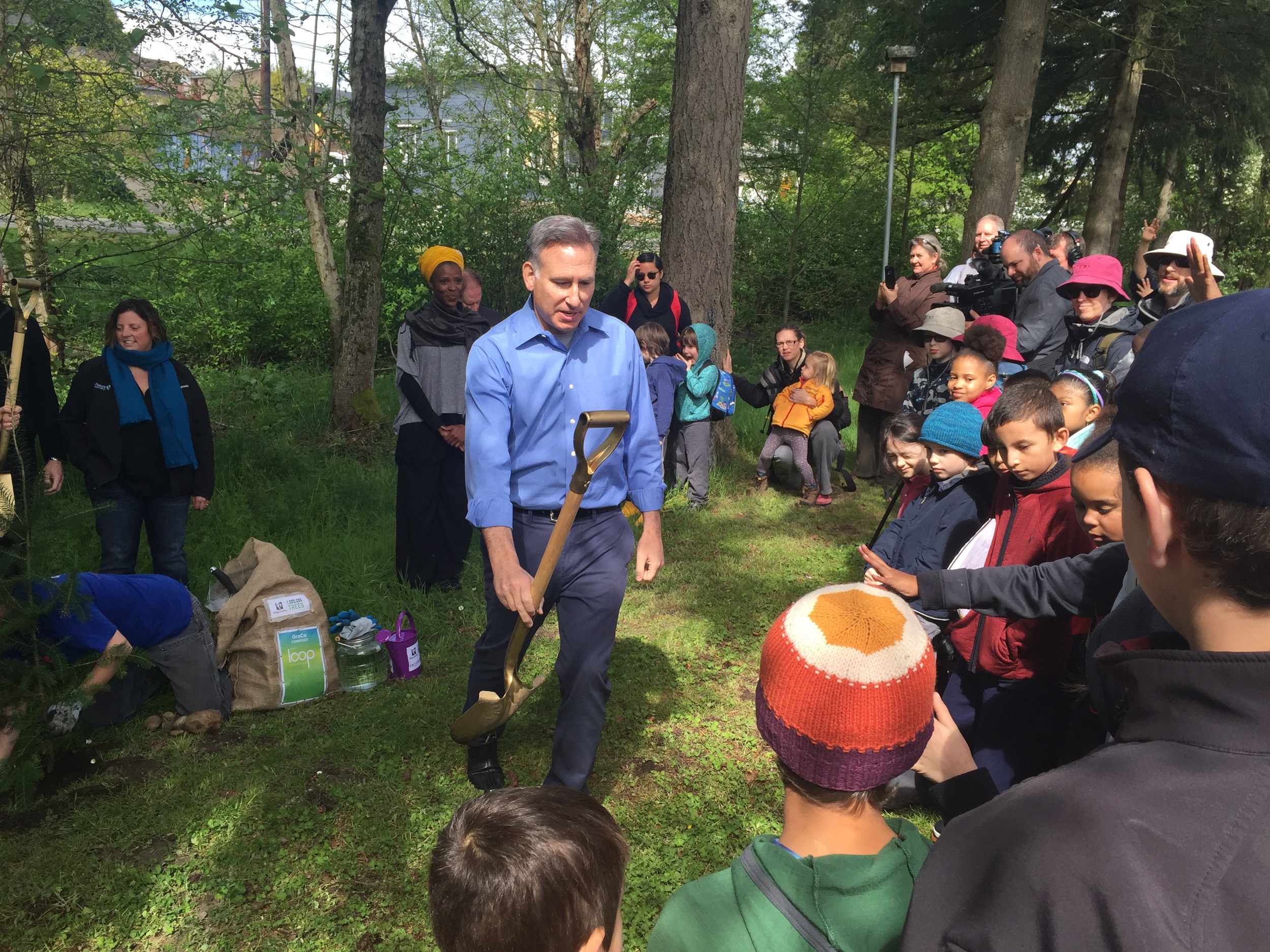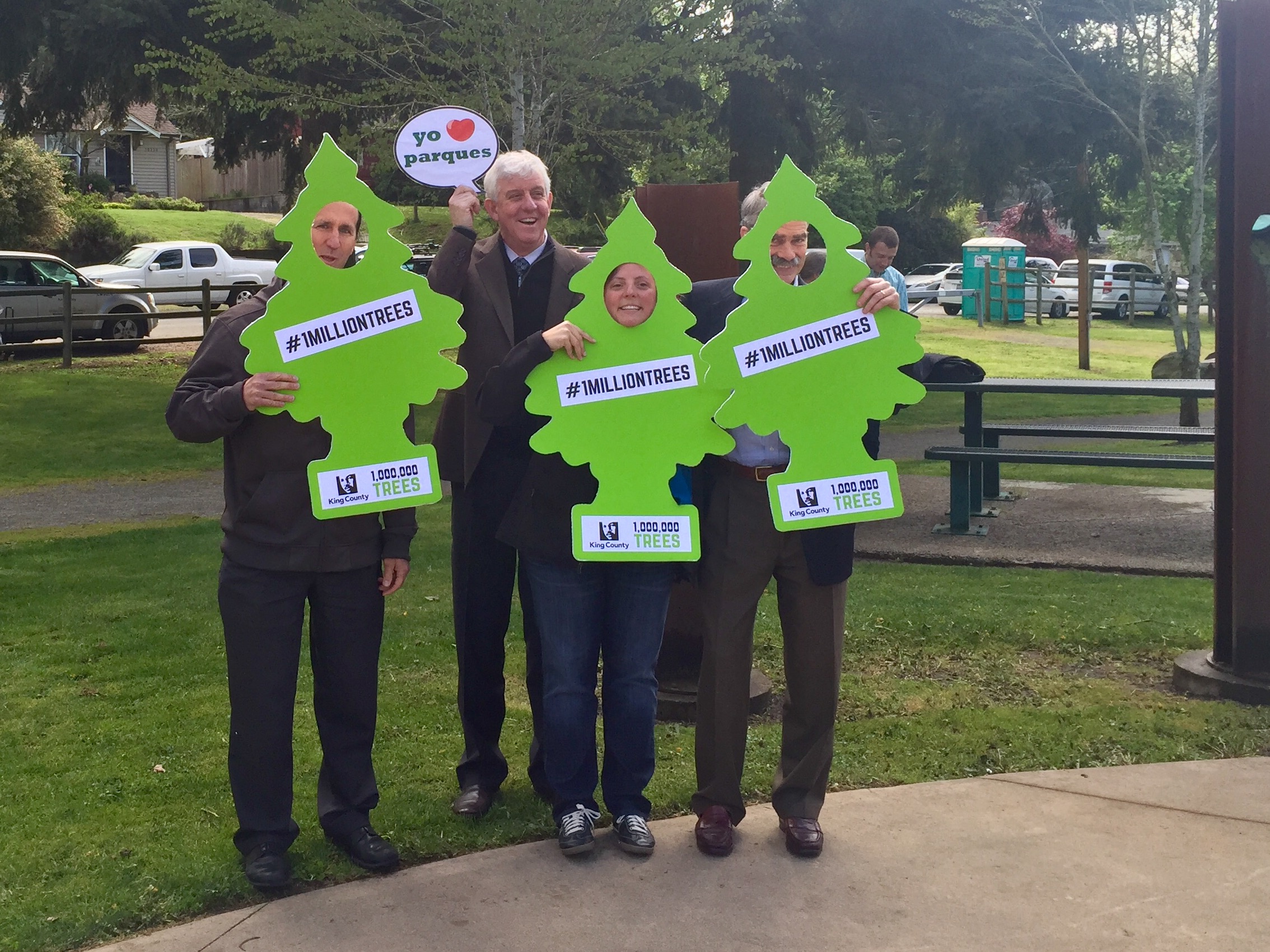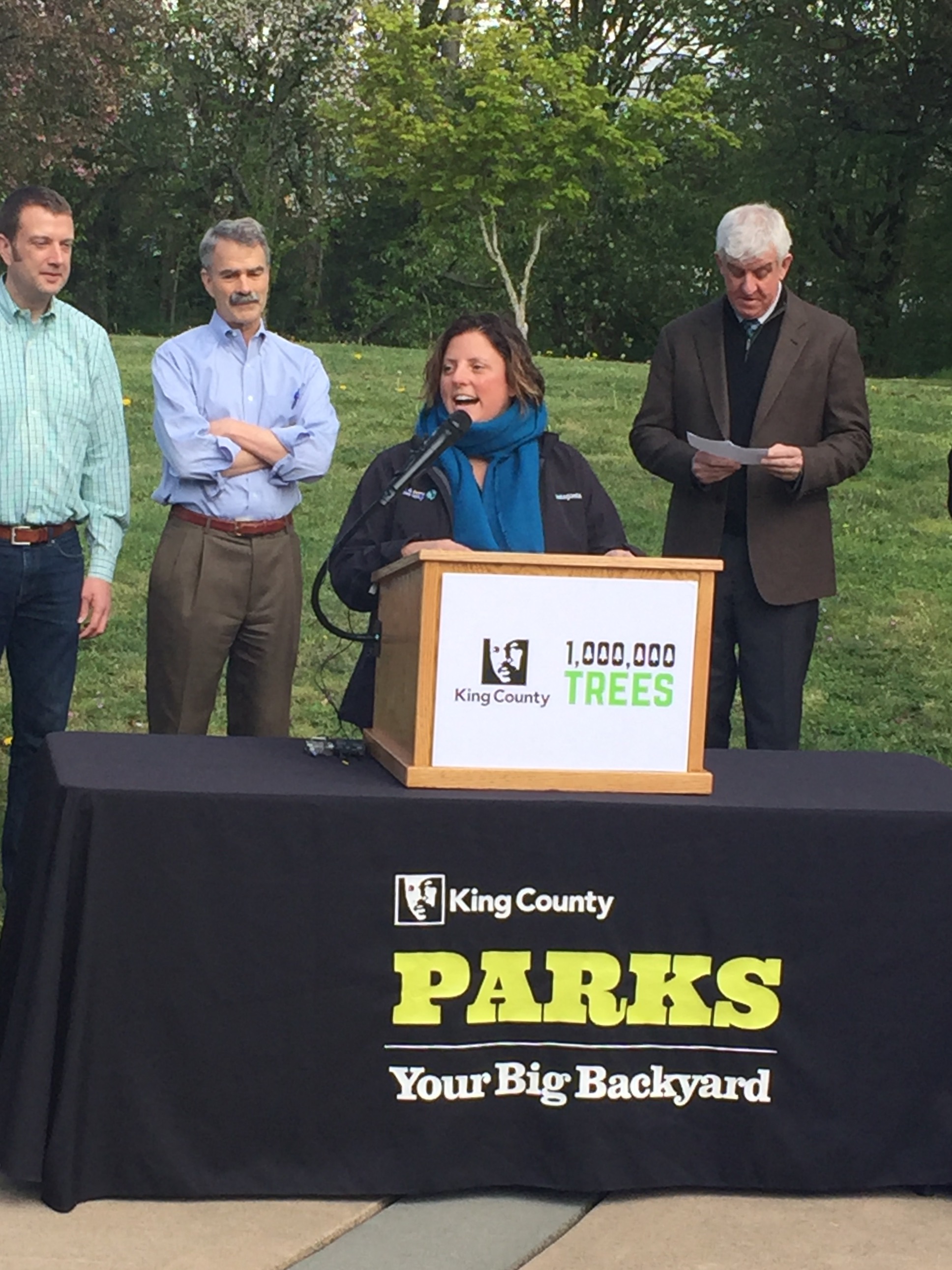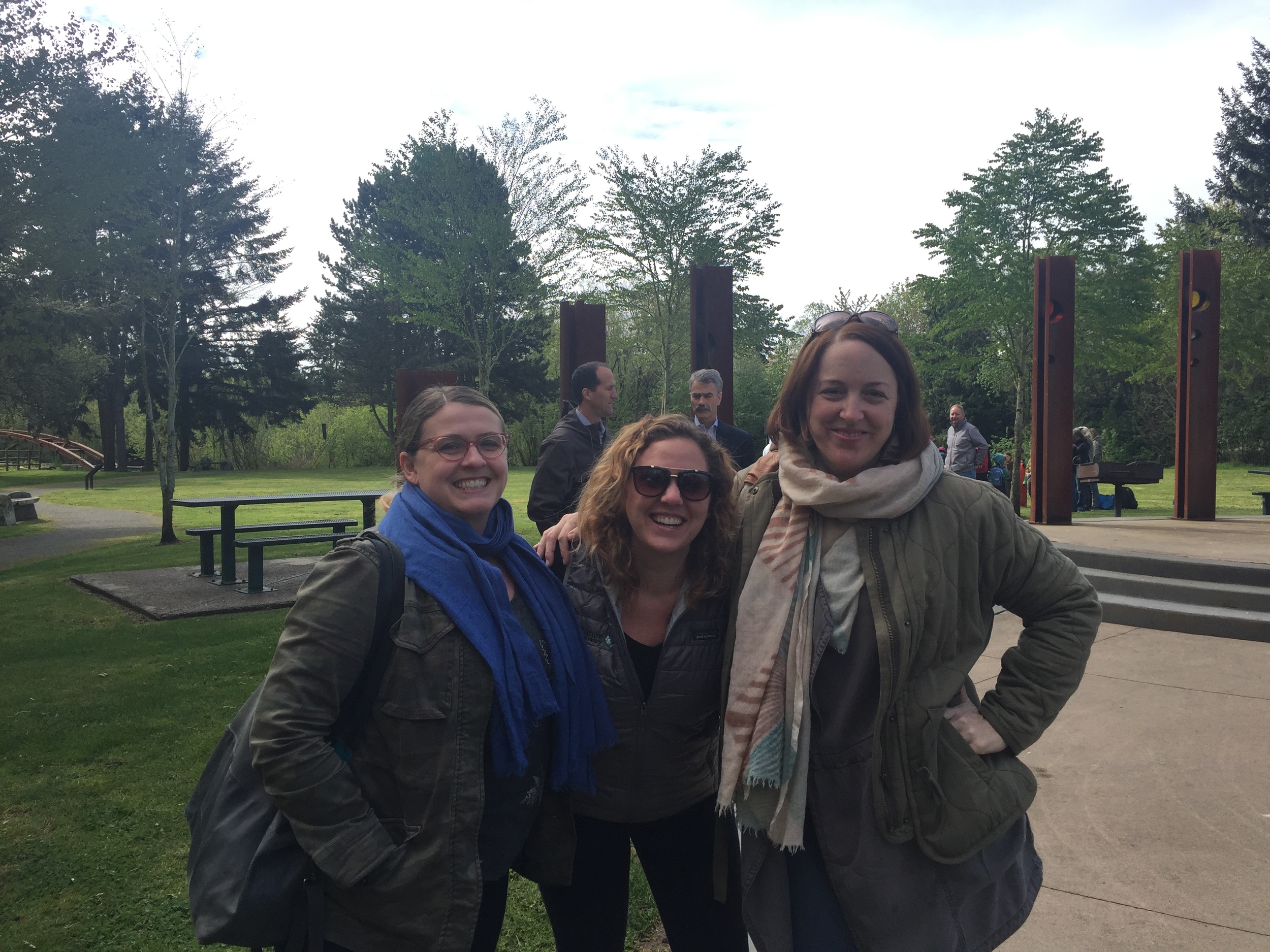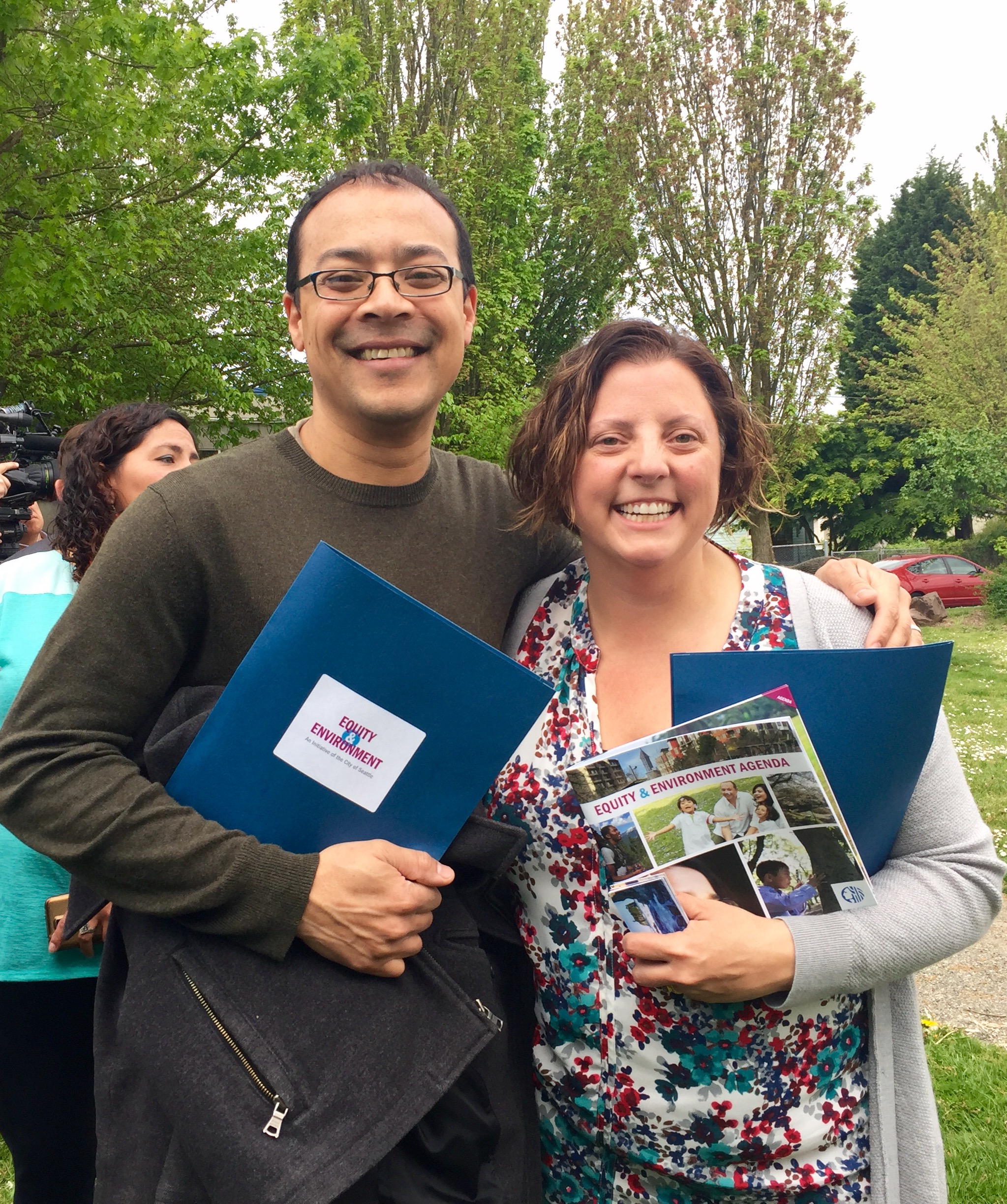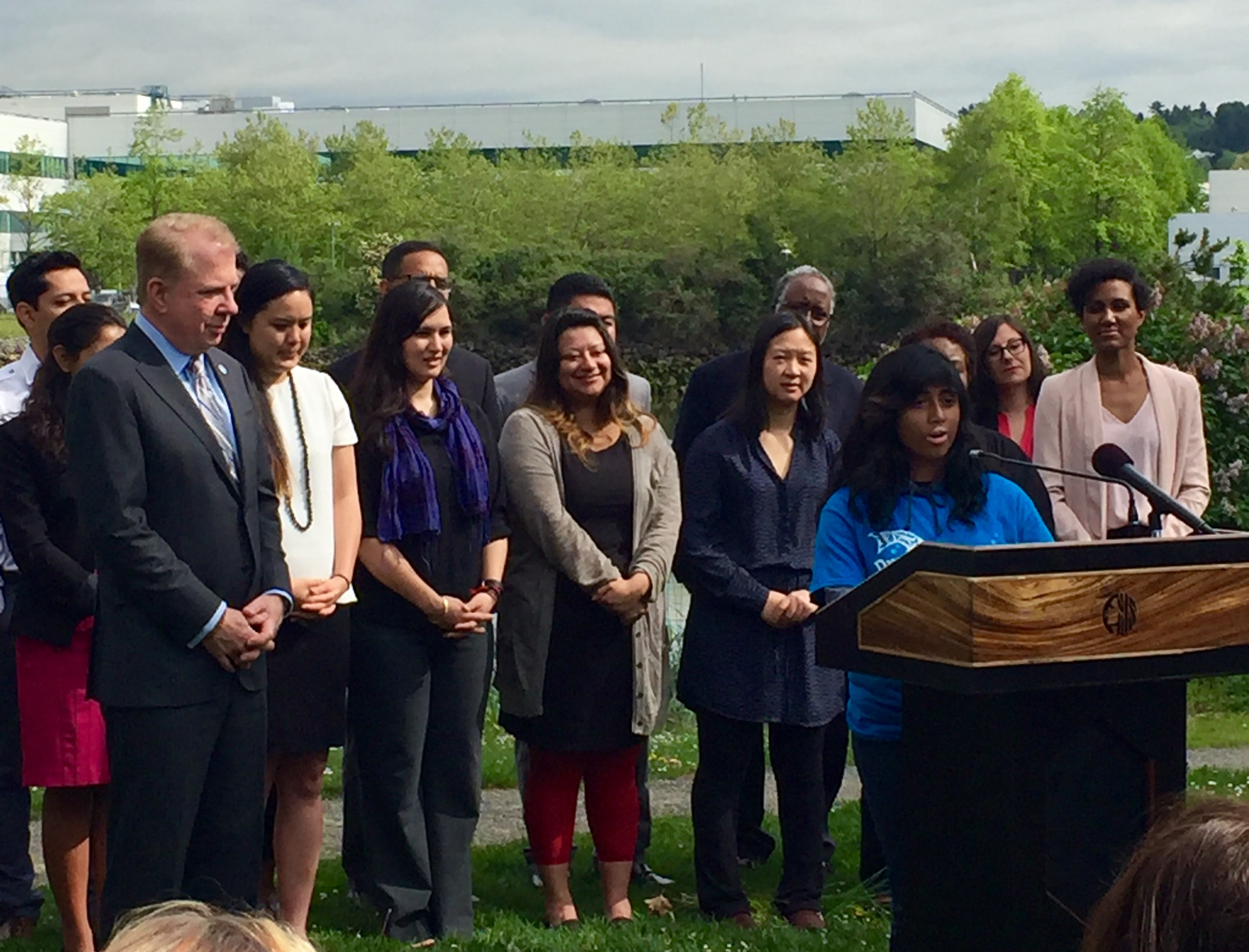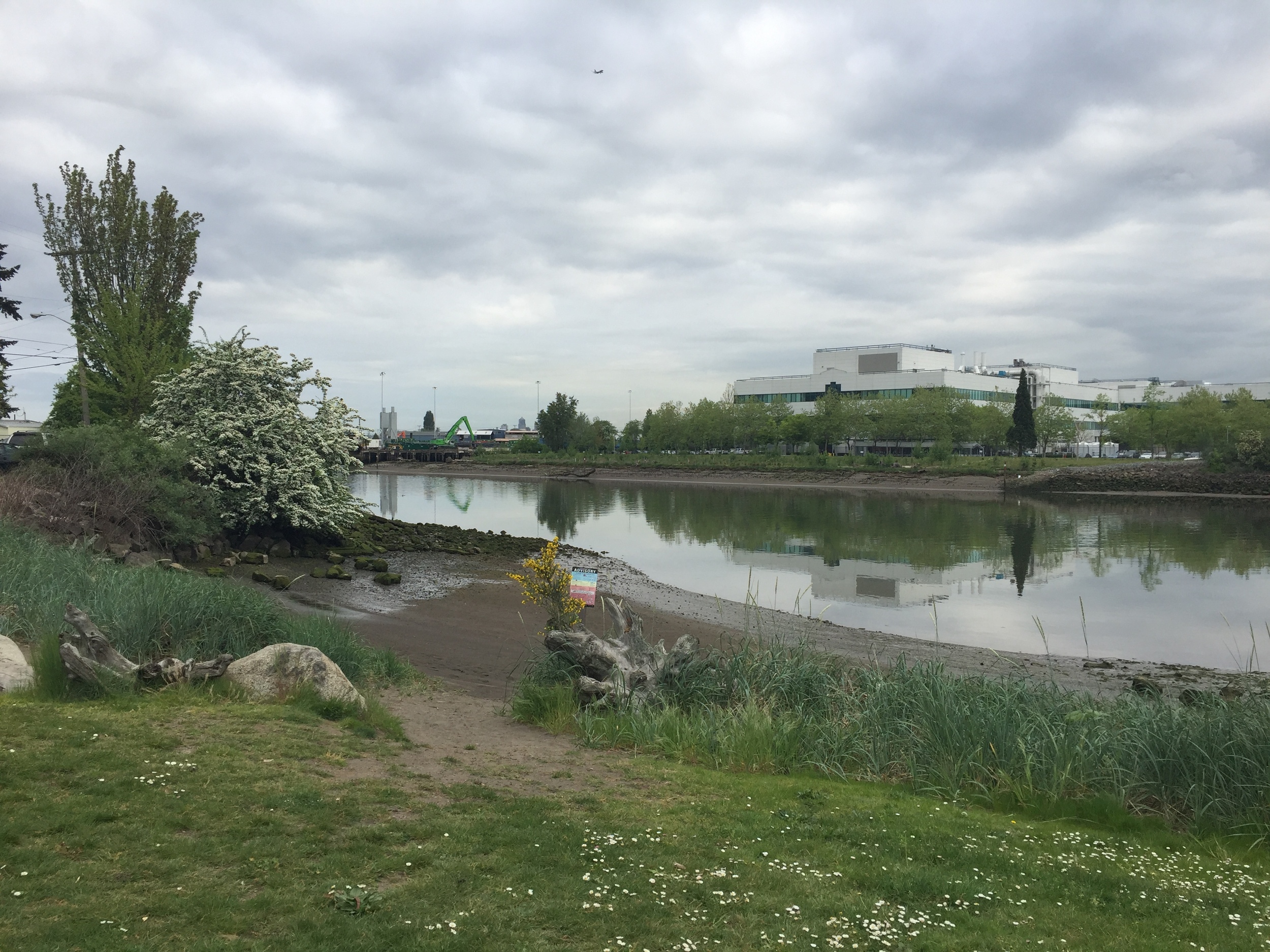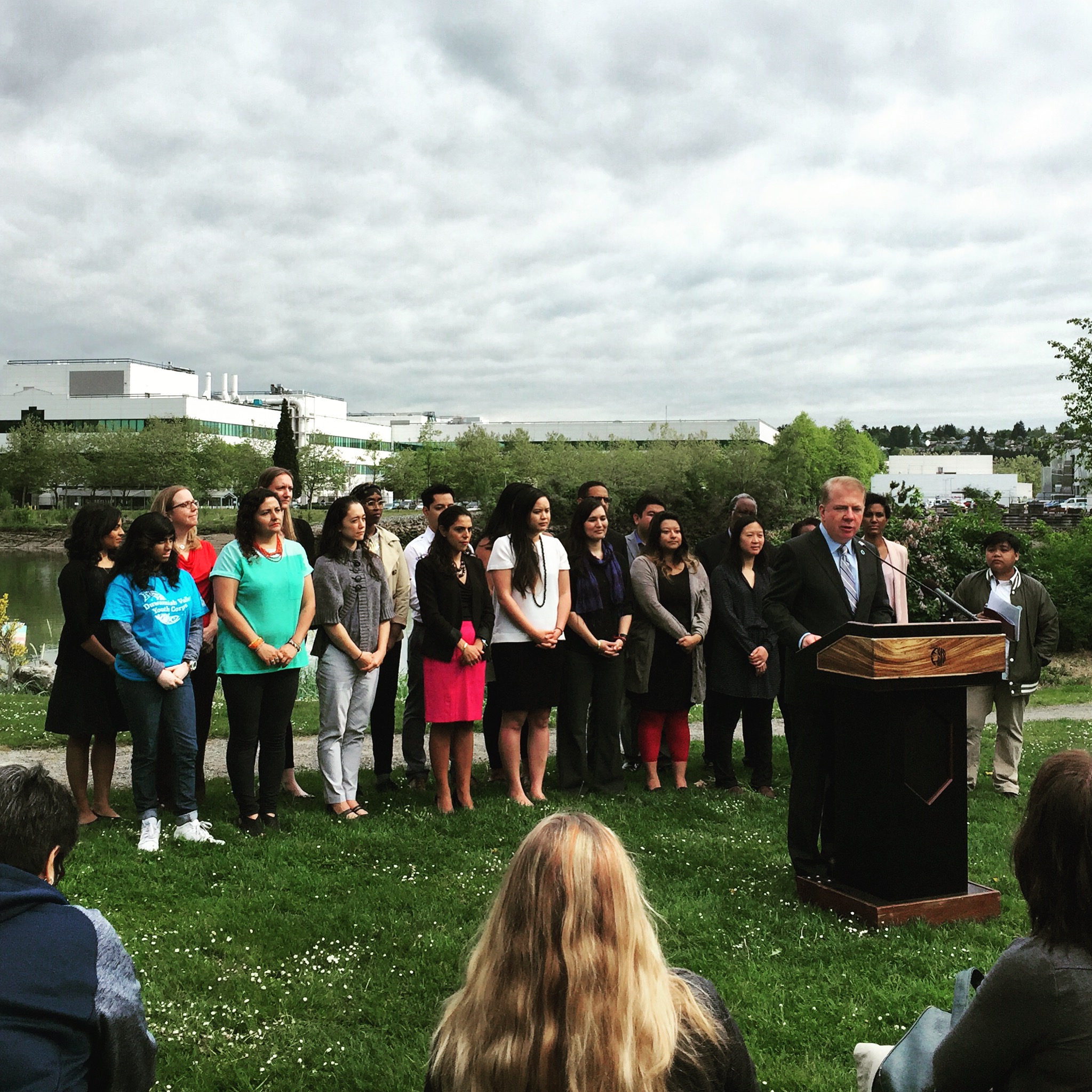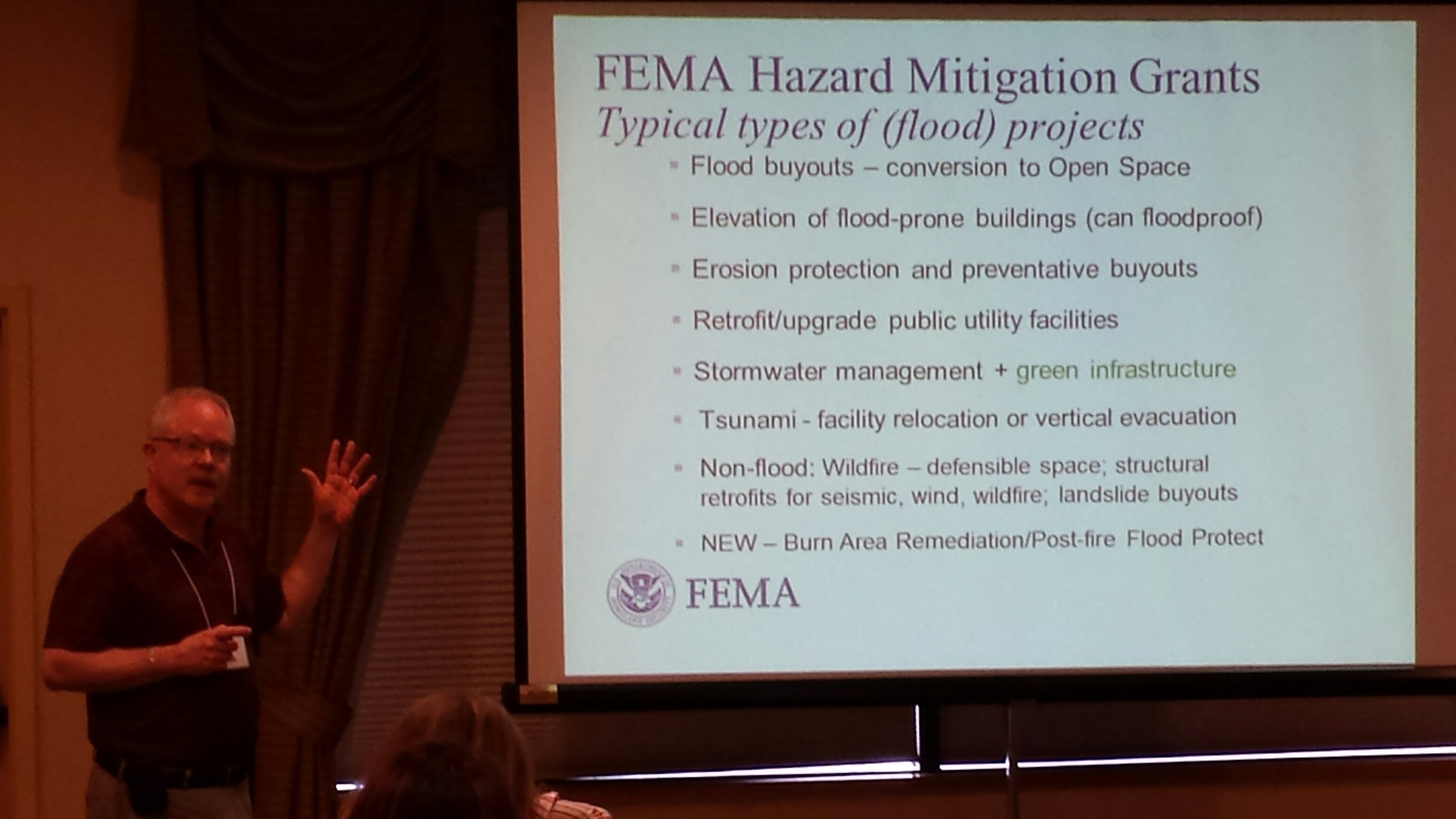It has been 50 years since the Clean Water Act was passed and while substantial progress has been made for the health of waterways, people, and the planet there is still more work to do. Green infrastructure such as bioswales and rain gardens are one tool that can help the Puget Sound region support people and Salmon.
A huge opportunity for Central Washington
A Critical Ingredient to Washington's Hops
Written by Kara Karboski, Kristen Taggart & Ryan Anderson, Washington RC&D Council
Photographed by Heather Hadsel
Washington State is a land shaped by fire and water. Mighty rivers have formed our landscapes and help to support wildlife, power our homes and cities, and water our farms. Likewise, fire has existed in the forests, prairies, and shrub-steppe of our state for thousands of years as an important agent of change and rejuvenation.
Toward the Yakima Valley, the Naches and Yakima Rivers flow out of the Cascade Mountain’s forested slopes in central Washington State and into the Columbia River. The Yakima River is one of the most productive watersheds of the Columbia. Unique folds in Columbia basin basalt (LAVA!) combined with gravel and sediment created vast floodplains that once were, and soon will be again, critical habitat for upwards of a million adult salmon returning to the Yakima Valley throughout each year.
CelebrateForests and Beer with OktoberForest
The water that runs from the snow and forests of the Cascades has become a vital economic driver in modern times. The valley’s sun, soil, and irrigation supply, along with its hard working community, have created a hop industry that supplies approximately 70% of the nation’s hops. That means 70% of our beer is dependent on reliable, clean water that originates in the forests of the eastern Cascades.
September and early October bring familiar and odorous reminders that Yakima is “Hop Town, USA.” Crews cut hop vines off of trellises and haul them to various processing facilities while the familiar smell of beer’s most distinct flavoring agent – hops – drifts through town. Occasional whiffs of smoke from prescribed fires blow through town as well. These autumnal smells are both important to the beer industry and to the forest. Beer needs clean water that has been filtered and stored in healthy forests. The dry forests of the eastern Cascades need occasional low-severity fires to protect them from devastating fires and to preserve their necessary function of providing clean water.
But our forests are unhealthy. Natural fires, started by lightning during the dry months, used to dance their way across the eastern forests of Washington. These low- to moderate-severity fires are necessary for the health of the forests and served to burn through the vegetation on the forest floor returning nutrients to the soil, naturally thinning the forests, opening up the understory for new plant growth, and creating important habitat for wildlife. Periodic fires like these reduced the available build up of fuels for the next fire, continuing the cycle of low- to moderate-severity fires.
We have been very effective at fighting fires to protect forest resources and communities. This has resulted in the suppression of natural fire which would otherwise reduce the buildup of dead vegetation. With higher fuel loads, fires burn hotter and faster. And these fires are much more difficult and costly to fight. These megafires are consuming resources – economic, environmental and human – at an unacceptable rate.
Megafires can affect water supplies in devastating ways. Without vegetation to slow down the movement of water, it can move large volumes of soil, ash, and other sediment. Although sediment movement, landslides, and debris flows are all normal processes in the Cascade Mountains, they can occur at super-natural scales if our forests suffer burns that are also super-natural. During Washington’s Carlton Complex Fire, for example, massive debris flows destroyed infrastructure such as irrigation systems, roadways, and buildings. When debris flows like this occur above reservoirs or water intake structures, capacity of those systems can be lost for long periods of time or indefinitely. This is on top of the water quality lost due to more silt running into waterways. These events change the clarity of water, its taste and odor, and can result in other adverse effects on water.
If our forests are not treated, through mechanical thinning or planned and coordinated burns called prescribed fire, a highly destructive fire could cause a disruption of our clean, reliable water, impacting our hop production, drinking water, and brewing industries and create major expenses for water users.
Healthy forests and the reliable water they produce are not just for beer, but for the benefit of all downstream communities. Some communities are recognizing the risk from uncharacteristically large and destructive fires and the potential impacts these fires would have on their clean water supply. In New Mexico, a community in the Santa Fe Watershed recognizes the value of healthy forests for providing clean water. This type of investment is also seen in the Rio Grande Water Fund. Communities are recognizing the risks and are protecting their watersheds with investments from utilities and other funders that depend on healthy forests.
In our state, the Washington State Fire Adapted Communities Learning Network is working to connect communities that live in fire prone areas so that they can learn from one another, share resources, and support each other when fires affect them. Understanding the impacts of fires on our water resources is one piece of this complex issue, and communities are coming up with local solutions that work best for them.
The Yakima Valley is blessed with hops and beer, forests and fish. Both fire and water play an important role in supporting these natural resources. We can protect these resources and our communities by recognizing the role fire plays, both good and bad, and by addressing these risks for the benefit of all.
Read about our work in Yakima Valley
Learn more at OKtoberForest.org
Celebrating Earth Month & Clean Water in Puget Sound
Written and Photographed by Stephanie Williams, Project Coordinator
Earth Month is already over! It feels like it rushed by as fast as stormwater over a downtown Seattle sidewalk. In order to draw out Earth Month and make it last, The Nature Conservancy participated in two recent launch events that will lead to slowing down that same urban stormwater, allowing it to pass more slowly over trees, plants and soil so it’s cleaner and healthier for Puget Sound and its communities.
King County's One Million Trees Campaign launch on April 14th and the City of Seattle's Equity and Environment Agenda Announcement on April 22nd marked the beginning of The Nature Conservancy’s increased collaboration with local communities to improve water quality in the region.
King County's One Million Trees Campaign Launch
King County has ambitiously committed to planting 1 million trees between now and 2020 as part of their larger Strategic Climate Action Plan. They smartly partnered with The Nature Conservancy to help get the job done. Although it would have been easier and cheaper to plant all the trees in existing forests and rural areas, our Puget Sound Conservation Director, Jessie Israel, got King County decision-makers enthusiastic about putting a good portion of those trees back into our cities.
After County Executive, Dow Constantine, reminded the multi-generational audience at White Center Heights Park of the gravity of climate change and the importance of partnerships to get big jobs like these done, Jessie spoke about how planting trees connects to our Nature Conservancy work with WATER and CITIES.
Addressing the dozens of wide-eyed primary school children sitting cross-legged on the ground in front of her, Jessie explained that nature in cities is the remedy for stormwater that runs through dirty streets and off parking lots, polluted by oil and chemicals and then ends up in our streams and rivers. She created the imagery of trees acting as a giant umbrella that protects the community and ensures the water coming down from the sky is slowed and cleaner when it reaches Puget Sound.
“Planting and maintaining urban trees helps to value our land in cities that is already covered in nature so that it doesn’t get paved over - making stormwater impacts worse. Trees give us habitat corridors, keep our stream banks strong, help us to preserve intact ecosystem function in urban forested park lands like we have right here. As these trees grow up and get bigger, their canopy will grab water that falls as rain, intercepting it, and helping us to solve the stormwater problem, to solve our Puget Sound problem, a little at a time. Each tree we plant of this million trees will get us closer.”
One of our major partners for stormwater projects was also present to celebrate the start of this campaign. Steve Shestag, Boeing’s Director of Environment, Health, and Safety, followed Jessie's remarks by adding, "It's events like this and groups like [The Nature Conservancy and others] that do an amazing job to inspire us at Boeing Company to go out and do great things not just for technology and science, but for the environment."
Using their golden shovels, the County Executive, Jessie, Steve and some eager kids took turns packing soil around a young douglas fir to kick off this five-year campaign.
It may seem that tree planting is cliché and outdated. This event, the beginning of a project of epic proportions, was a reminder of how planting trees is still very relevant and a crucial part of tackling stormwater issues and improving the livability of urban neighborhoods.
Seattle's Equity and Environment Action Agenda
A week later, on Earth Day, Seattle Mayor Ed Murray revealed his new Equity and Environment Agenda, developed by over 800 local community participants. Standing in front of the greenish gray water of the Duwamish and surrounded by local community leaders, Mayor Murray passionately spoke about how environmental degradation and poor water quality disproportionately affects low income areas and communities of color. "Seattle’s environmental progress and benefits must be shared by all residents no matter their race, immigration status, or income level." His blueprints for action include offering low-priced fruits and vegetables to families enrolled in the city's preschool program, environmental positions for city's youth summer employment program and having a full time environmental justice advisory committee, among others.
Nature Conservancy team members were eager to be present at Duwamish Waterway Park as the Mayor rolled out his plan to incorporate strong economic justice policy to affect change. The announcement of this agenda opens up more opportunities for The Nature Conservancy to partner on urban clean water initiatives in these very important communities.
Shelina Lol, a bright-eyed 16-year sophomore at Chief Sealth High School spoke about what this equity and environment initiative means for her as a multi-lingual immigrant from Fiji and also for her South Park community. With frustration and heartbreak in her voice, she spoke about not being able to safely play in the river and despite contamination risks, many of her neighbors still fish in the Duwamish because they can’t afford other sources of food.
Despite the disadvantages they face, Shelina and her fellow Duwamish Valley Youth Corps members have already done projects like installing raingardens, to improve water quality in their area. The City of Seattle's Equity and Environment Action Agenda means raingardens are just the beginning for improving water quality in marginalized communities. The Nature Conservancy is proud to be part of this inclusive movement that will help make clean water for all Puget Sound communities a real possibility. We are excited by the initiative demonstrated by the Mayor and City of Seattle because it aligns with our organizational priorities to accelerate action on stormwater, water quality issues and environmental justice.
Earth Month is over but The Nature Conservancy is energized by these two new opportunities to continue connect people with clean water!
Watch our stormwater video to learn more about how water quality is affecting Puget Sound
Sign up for our upcoming Depave volunteer event in Tacoma
NORFMA 2015 Annual Conference
Floodplain Management: Decisions Today Last Beyond Tomorrow
Written by Jenny Baker, Senior Restoration Manager and Bob Carey, Director of Strategic Partnerships
At a recent Northwest Regional Floodplain Management Association conference, there was lots of talk not just about flooding and how to keep people reasonably safe in floodplains (the charge of floodplain managers), but also about habitat for salmon and other fish and wildlife. This is a sea change. In many places today, and in this region just a few years back, floodplain management conferences largely entailed presentations and conversations about reducing flooding through engineering and regulations. Conversations about fish, wildlife, clean water and recreation occurred at different gatherings by different people – even though they were talking about the same rivers and coasts.
Today, to the Northwest is leading the nation in developing a more holistic and sustainable approach to managing our waterways. The idea that floodplains provide a multitude of benefits to people and nature is being incorporated in planning and projects by floodplain managers in cities and counties, state agencies and the feds around the northwest. In addition to a keynote by our own Bob Carey on the Washington Floodplains by Design Initiative, there were sessions on levee setbacks and floodplain restoration, and folks mentioned habitat restoration, green infrastructure and salmon in their presentations. Throughout the conference, presenters and audience members often referred to Floodplains by Design and the work of the Conservancy in Washington State. We’re excited to see the momentum building at multiple levels for plans and projects that have tangible, long-lasting outcomes for nature and people.






